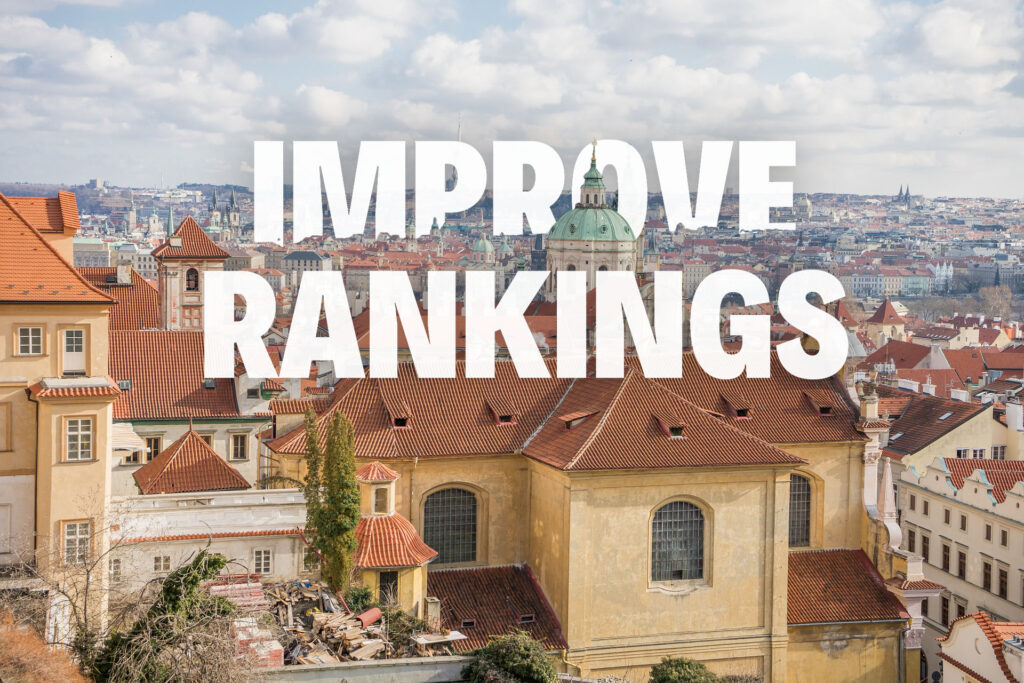Imagine you have the best-kept secret in town, but it’s hidden in a small, dimly lit alley. No one would know it exists, right? That’s what happens when your website isn’t optimized for search engines. SEO acts like a bright, flashing sign that directs internet traffic to your site. By rank higher on Google, you significantly increase your visibility and attract more visitors.
This isn’t just about numbers; it’s about drawing the right audience—those genuinely interested in what you offer.

Understanding User Intent
User intent is the magic ingredient that transforms casual browsers into engaged visitors. When someone types a query into Google, they’re looking for something specific.
Are they seeking information, trying to make a purchase, or hunting for a local service?
Understanding this intent allows you to tailor your content to meet their needs.
For example, someone searching for “best running shoes” likely wants product recommendations, whereas “how to choose running shoes” indicates they’re seeking guidance and tips.
Did you know according to a recent Search Engine Journal report, the average click-through rate (CTR) for the top organic result on Google is a whopping 31.3% ? That’s a lot of eyeballs on your content if you can snag that coveted top spot.
Enhancing Brand Awareness
Rank higher on Google isn’t just about clicks and traffic; it’s also about building trust and credibility. When users repeatedly see your website at the top of their search results, they begin to associate your brand with authority and reliability.
A recent survey by HubSpot found that 72% of consumers say they trust businesses that rank high in search engine results pages (SERPs).
This enhanced brand awareness can lead to increased customer loyalty and higher conversion rates, making your SEO efforts doubly rewarding.
Learning SEO for Free: A Beginner’s Guide
Utilizing Free Online Resources
The internet is a treasure trove of SEO knowledge, and the best part? Much of it is free! Websites like Moz, Ahrefs, and Google’s own Search Central offer comprehensive guides and tutorials.
These resources cover everything from basic concepts to advanced strategies, allowing you to learn at your own pace.
Dive into blog posts, watch video tutorials like the one Matt Cutts, a former Google Search Quality leader, created on effective link building, and join online communities – there’s a wealth of knowledge waiting to be explored.
Practicing SEO Techniques on Your Own Website
Learning is great, but doing is even better! Put your newfound SEO knowledge into action by optimizing your website. Start with keyword research to discover the terms your target audience is searching for.
Then, focus on improving your site structure (think clear categories and subcategories for easy navigation) and creating high-quality content that truly informs and engages your visitors.
Tools like Google Analytics and Search Console will help you track your progress and see what’s working (and what’s not!).
Joining SEO Communities and Forums
SEO can be complex, but you don’t have to navigate it alone. Join SEO communities and forums like Reddit’s r/SEO or specialized groups on platforms like Facebook and LinkedIn.
These communities are filled with experienced professionals and fellow beginners.
Engaging in discussions, asking questions, and sharing your own experiences can accelerate your learning and provide you with practical insights and advice.
Step-by-Step Guide to Rank Higher on Google
Step 1: Conduct Thorough Keyword Research
Think of keywords as the bridge between what people search for and the content you provide. Tools like Google Keyword Planner can help you discover the keywords your target audience is using.
Aim for a mix of short-tail keywords (like “best cupcakes”) and long-tail keywords (like “how to make vegan cupcakes with almond flour”) to cover a wider range of search queries.
Step 2: Building a Strong Foundation – Site Structure
A well-structured website is like a well-organized library. Visitors should be able to find what they’re looking for with ease. Create clear categories and subcategories, and use internal linking to guide users from one page to another.
This not only improves user experience but also helps search engines crawl and index your site more effectively.
Step 3: Content is King – Create High-Quality Content
Compelling content is the heart and soul of SEO. It keeps visitors engaged and coming back for more. Focus on answering the questions your audience has.
For example, a travel blog might cover topics like “how to pack light for a two-week European”.
Step 4: Building Backlinks – The Currency of the Web
Links are like votes of confidence in the online world. The more high-quality backlinks you have from reputable websites, the better your ranking will be.
Guest blogging on relevant websites in your niche, creating shareable infographics like “The Ultimate Guide to Mobile Page Speed Optimization in 2024” (a hot topic!), and collaborating with influencers are all great ways to earn valuable backlinks.
Step 5: A/B Testing – Optimizing for Success
A/B testing, also known as split testing, allows you to see what works best on your website. Test different headlines (think emotional triggers!), images, and calls to action (CTAs) to see which ones drive more clicks and engagement.
Tools like Google Optimize can help streamline this process. For instance, you might find that a headline like “5 Sneaky Hacks to Rank Higher on Google in 2024″ performs better than a more generic one.
Step 6: Speed Up Your Site – Embrace Page Load Speed
Nobody likes a slow website. In fact, according to a study by Unbounce, 53% of mobile users will leave a website that takes more than 3 seconds to load.
Yikes! Optimizing your website for speed is crucial for user experience and SEO. Compress images, leverage browser caching, and minimize JavaScript to ensure your site loads quickly.
Use Google’s PageSpeed Insights to get specific recommendations for improvement. Faster sites not only rank better but also have lower bounce rates, meaning visitors stay longer and engage more with your content.
Step 7: Mobile-First Indexing – A Must-Have for 2024
With more and more people accessing the internet via smartphones and tablets, having a mobile-friendly website is no longer optional, it’s essential.
Google actually switched to mobile-first indexing in 2018, meaning the mobile version of your website is now the primary version used for ranking.
Use responsive design to ensure your site looks and functions well on all screen sizes. Google’s
Mobile-Friendly Test can help you identify and fix any mobile usability issues. A mobile-optimized site not only improves user experience but also ranks higher in mobile search results, where a significant portion of searches now take place.
Bonus Tip: Stay Updated with the Latest SEO Trends
The SEO landscape is constantly evolving, so staying informed is key. Follow SEO blogs from industry leaders like Moz and Search Engine Journal, and attend webinars or conferences to learn about the latest algorithms and best practices.
Remember, SEO is a marathon, not a sprint. By consistently creating high-quality content, optimizing your website, and staying up-to-date on the latest trends, you’ll gradually climb the Google ranks and achieve your SEO goals!
On-Page SEO Strategies to Boost Your Google Ranking
Want your website to rise from the depths of Google search results and bask in the glory of the first page?
You’ve come to the right place! Here’s a breakdown of SEO strategies that will make your website sing to both search engines and human visitors alike.
Optimizing Title Tags and Meta Descriptions
Imagine your title tags and meta descriptions as flashy billboards on the information highway. They need to be clear, concise, and irresistibly clickable. Think under 60 characters for titles and 160 characters for descriptions.
For example, instead of a bland “Cupcake Baking Guide,” try something like “Unlock the Secrets to Heavenly Cupcakes: A Step-by-Step Guide.”
Don’t forget to weave in your target keyword (like “Rank Higher on Google” in this case) naturally for that extra SEO oomph.
Tailoring Content for Target Keywords
Keywords are like bridges between what people search for and the content you offer. But here’s the secret: it’s not about keyword stuffing!
Google sniffs out unnatural keyword overload a mile away. Instead, focus on creating high-quality content that seamlessly integrates your target keywords and their variations.
Think of it like having a conversation – you wouldn’t pepper every sentence with the same word, right? So, explore synonyms and long-tail keywords to capture a wider range of search queries.
Answering Related User Questions
Ever get frustrated when you ask a question online and get nothing but a confusing jumble of text? Don’t let that be your website! Anticipate the questions your audience might have and weave those answers directly into your content.
This not only keeps users engaged but also makes you a hero to Google, which loves sites that directly address search intent.
Imagine including sections like “How does Google SEO work?” or “What are the latest SEO trends for 2024?” in your content – Google would be giving you a high five (if search engines had hands).
Incorporating Internal Links
Think of internal linking as creating a web of connections within your website. By linking to relevant pages on your site, you’re guiding users on a journey of discovery and keeping them engaged for longer.
This also helps search engines understand the structure and flow of your website.
Imagine an article about healthy breakfasts linking to another page with delicious smoothie recipes – that’s the power of internal linking in action!
Avoiding Over-Optimization
Nobody likes a slow website. In fact, studies show that over half of mobile users abandon a website that takes more than 3 seconds to load.
Yikes! So, streamline your website for speed by compressing images, minimizing JavaScript, and leveraging browser caching.
Google’s PageSpeed Insights can be your BFF here, offering specific recommendations for improvement.
Remember, a fast website not only keeps visitors happy but also helps you rank higher on google.
Mobile-First: The New Norm:
With more and more people glued to their smartphones and tablets, having a mobile-friendly website isn’t a suggestion, it’s a necessity.
Google actually prioritizes mobile-first indexing, meaning the mobile version of your website is now the primary version used for ranking.
Responsive design ensures your site looks and functions flawlessly on any screen size.
Google’s Mobile-Friendly Test can be your knight in shining armor, helping you identify and fix any mobile usability issues..
Advanced SEO Techniques
The SEO landscape is constantly evolving, so staying informed is key. Follow industry blogs from SEO rockstars like Moz and Search Engine Journal.
Attend webinars or conferences to learn about the latest algorithms and best practices.
Remember, SEO is a marathon, not a sprint.
By consistently creating high-quality content, optimizing your website, and staying up-to-date on the latest trends, you’ll gradually climb the Google ranks and achieve your SEO goals!
Leveraging Schema Markup
Schema markup helps search engines understand your content better, potentially boosting your visibility in search results.
Think of it like adding labels to your website content, making it easier for search engines to categorize and display your information.
Utilizing Video Content for SEO
Videos are highly engaging and can boost your SEO efforts.
Create informative and entertaining videos, optimize them with relevant keywords, and embed them on your site to increase dwell time.
For instance, a tutorial video on “How to Rank Higher on Google” can attract viewers and improve engagement.
Implementing Local SEO Strategies
For businesses with a local presence, local SEO is your secret weapon.
Optimize your Google My Business profile, gather positive reviews, and ensure your NAP (Name, Address, Phone number) is consistent across all online listings.
This increases your visibility in local search results, attracting customers who are searching for businesses near them.
Imagine a bakery optimizing their website and listings for “best cupcakes near me” – local SEO can bring those hungry customers straight to your door!
Enhancing User Experience (UX)
A website that’s a pleasure to use can significantly improve your SEO. Think clean, intuitive design, easy navigation, and fast loading times.
Mobile-friendliness is crucial here too. Appealing visuals and easy-to-read fonts all contribute to a better user experience (UX).
Remember, happy visitors tend to stay longer and engage more with your content, which is a win-win for both SEO and user satisfaction.
Tools and Resources for Better SEO
Fiveral SEO Consultancy Services
For a helping hand, consider professional SEO consultancy services. Platforms like Fiveral offer comprehensive SEO solutions tailored to your specific needs.
Their expertise can make a significant difference in your rankings and overall SEO strategy.
Whether you’re a beginner or a seasoned webmaster, a professional opinion can provide valuable insights and a strategic edge.
Using Free SEO Checkers
Free SEO tools like Google Search Console, MozBar, and Screaming Frog are your SEO doctor on call!
These tools can diagnose potential issues with your website, from technical glitches to content gaps.
Regularly checking your site’s health with these free tools can help you identify areas for improvement and stay ahead of the curve.
Recommended SEO Tools and Plugins
For serious SEO warriors, consider premium tools like Ahrefs, SEMrush, and Yoast SEO.
These tools offer in-depth analyses and recommendations to supercharge your SEO strategy.
Imagine Ahrefs helping you analyze your backlink profile (links from other websites pointing to yours) or Yoast SEO ensuring your content is perfectly optimized for search engines.
Measuring and Improving Your SEO Performance
Key Metrics to Track
Keep an eye on key metrics like organic traffic, bounce rate (how many visitors leave after just one page), and average session duration (how long visitors stay on your site).
Tools like Google Analytics can be your data guru, providing valuable insights into your website’s performance.
By analyzing these metrics, you can identify areas that need improvement and refine your SEO strategy accordingly.
Regular SEO Audits
Think of SEO audits as a spring cleaning for your website.
Tools like Sitebulb or DeepCrawl can help you uncover technical issues, content gaps, and other potential problems.
By conducting regular SEO audits, you ensure your website remains in top shape and continues to climb the search engine rankings.
Adapting to Google Algorithm Updates
Google’s search algorithms are like living organisms – they’re constantly evolving! Staying informed about these updates is crucial to maintaining and improving your ranking.
Follow SEO news sites, join online forums, and subscribe to industry newsletters to stay ahead of the curve.
This way, you can adapt your SEO strategy to keep pace with Google’s ever-changing landscape.
Conclusion: Achieving Long-Term SEO Success
Staying Updated with SEO Trends
The SEO world is constantly in flux.
To stay competitive, make a commitment to lifelong SEO learning. Follow reputable blogs, attend webinars, and participate in industry conferences.
By staying up-to-date on the latest trends and algorithm changes, you can ensure your SEO strategy remains effective.
Continuous Learning and Improvement
SEO is a journey of constant learning and adaptation. Regularly analyze your website’s performance, conduct SEO audits, and experiment with new techniques.
Use tools like Google Analytics and Search Console to track your progress and identify areas for improvement.
Embrace a growth mindset, and your SEO efforts will continue to blossom over time.
Collaborating with SEO Experts
Partnering with an SEO expert can provide valuable insights and strategies to take your SEO game to the next level.
Consider collaborating with a consultancy like Fiveral to gain expert advice tailored to your specific needs.
Whether you’re just starting out or looking to refine your existing approach, professional guidance can help you achieve your goals faster and more efficiently.
Frequently Asked Questions
How to rank for a keyword
Identify relevant keywords using tools like SEMrush or Ahrefs. Integrate these keywords naturally into your content, including titles, headers, and body text. Building quality backlinks and optimizing on-page elements can also improve your keyword rankings.
How does a search engine find results?
Search engines use bots to crawl and index web pages. They follow links and analyze content to understand the context and relevance of pages. Algorithms then rank higher on Google for these pages based on various factors like relevance, quality, and user experience.
How does Google SEO work?
Google SEO involves optimizing your website to improve its ranking in Google search results. This includes on-page factors like keyword optimization and content quality, as well as off-page factors like backlinks and social signals.
How to rank higher on Google in 2024?
Stay updated with the latest SEO trends and algorithm changes. Focus on creating high-quality, user-focused content, optimizing for mobile and voice search, and leveraging AI tools for better insights and performance.
How do you rank No 1 on Google?
Achieving the top spot on Google requires a combination of high-quality content, thorough keyword research, strong backlinks, and excellent user experience. Regularly update your content to keep it fresh and relevant.
Ensure your site is technically sound with fast load times, mobile optimization, and secure connections (HTTPS). Engage in link-building strategies, such as guest blogging and influencer outreach, to gain authoritative backlinks.
Most importantly, focus on providing value to your users, as Google aims to rank content that best answers searchers’ queries.
How do I increase my Google search ranking?
Increasing your Google search ranking involves several steps. First, conduct keyword research to identify terms your audience is searching for. Optimize your on-page SEO by incorporating these keywords into your titles, headings, and content.
Create high-quality, engaging content that addresses user intent. Build a strong backlink profile by earning links from reputable sites.
Finally, ensure your website is technically optimized with fast load speeds and mobile-friendliness.
How to show up on Google search?
To show up on Google search, ensure your site is indexed by submitting a sitemap through Google Search Console.
Optimize your website with relevant keywords and high-quality content. Use on-page SEO techniques like optimizing title tags, meta descriptions, and headers.
Build backlinks from reputable sites to increase your domain authority. Regularly update your content to keep it fresh and relevant.




